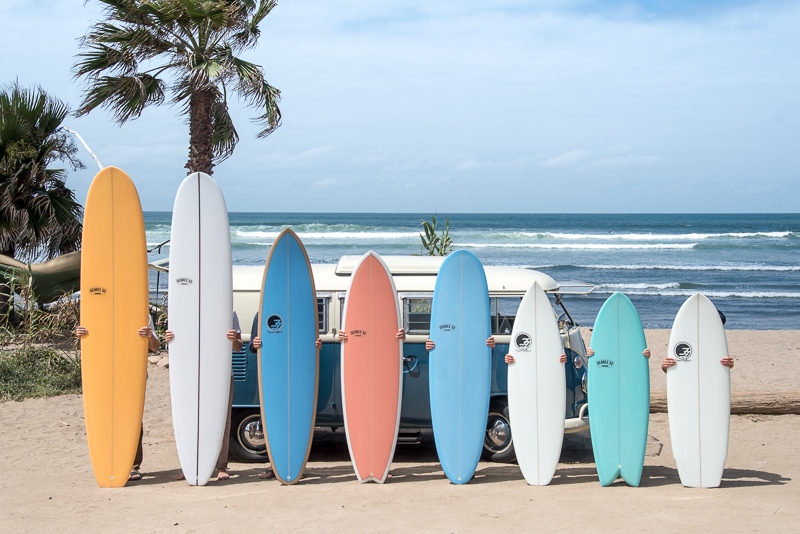Surfboards come in various shapes and sizes, designed for different surfing styles and conditions. Here are some common types of surfboards:
- Shortboard: Shortboards are typically less than 7 feet long and are designed for advanced surfers who want maneuverability and high-performance in critical waves. They are great for tricks, aerials, and quick turns.
- Longboard: Longboards are typically 9 to 12 feet long and offer stability, glide, and a more relaxed style of surfing. They are suitable for beginners and experienced surfers who enjoy classic maneuvers, such as walking the board and hanging ten.
- Funboard (Mini Mal): Funboards, also known as Mini Mals, are a hybrid between a shortboard and a longboard. They typically range from 7 to 8 feet long, offering a good balance of stability and maneuverability, making them suitable for a wide range of surfers, including beginners.
- Fish: Fish surfboards have a wider outline and are shorter in length, often around 5 to 7 feet. They are designed to be fast and maneuverable, making them great for smaller waves and providing a fun surfing experience.
- Gun Board: Gun boards are long and narrow surfboards, typically ranging from 7 to 12 feet, designed for riding large and powerful waves. They are suited for experienced surfers who want to tackle big surf conditions.
- Funshape: Funshapes are versatile surfboards with a shape that falls between a shortboard and a longboard. They often have a wider nose and tail, providing stability and maneuverability, making them great for a variety of wave conditions.
- Egg: Egg surfboards are similar to funboards but have a rounder, more egg-like shape, providing more stability and floatation. They are often used by surfers who want a more relaxed style of surfing.
- Mini Simmons: Mini Simmons boards have a unique design with a wide, planing surface and a shorter length, typically ranging from 5 to 6 feet. They offer speed and maneuverability, making them suitable for small to medium-sized waves.
- Stand-Up Paddleboard (SUP): Although not exclusively used for surfing, SUPs can be surfed in smaller waves. They are large and stable boards with a paddle for propulsion, allowing riders to catch waves early and ride them for an extended time.
- Tow-In Boards: Tow-in boards are specialized surfboards designed for tow-in surfing, where surfers are pulled into massive waves by a personal watercraft. These boards are shorter and more maneuverable to handle the speed and power of the big waves.
Keep in mind that these categories are not rigid, and many surfboards can have elements of multiple types to suit individual preferences and local wave conditions. Additionally, custom surfboards can be shaped to meet specific surfing styles and preferences. Learn more at sandiegosurfingschool.com











